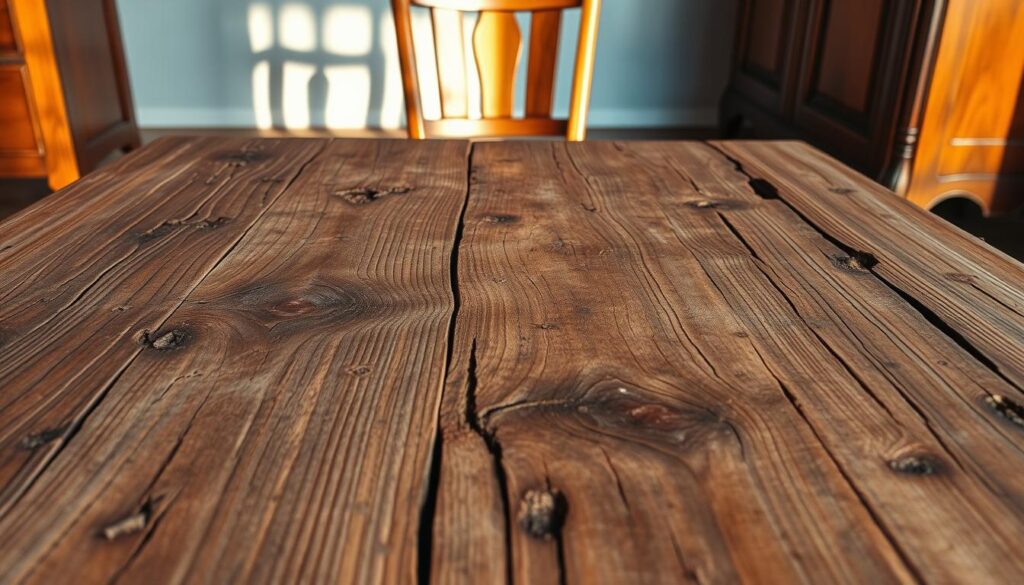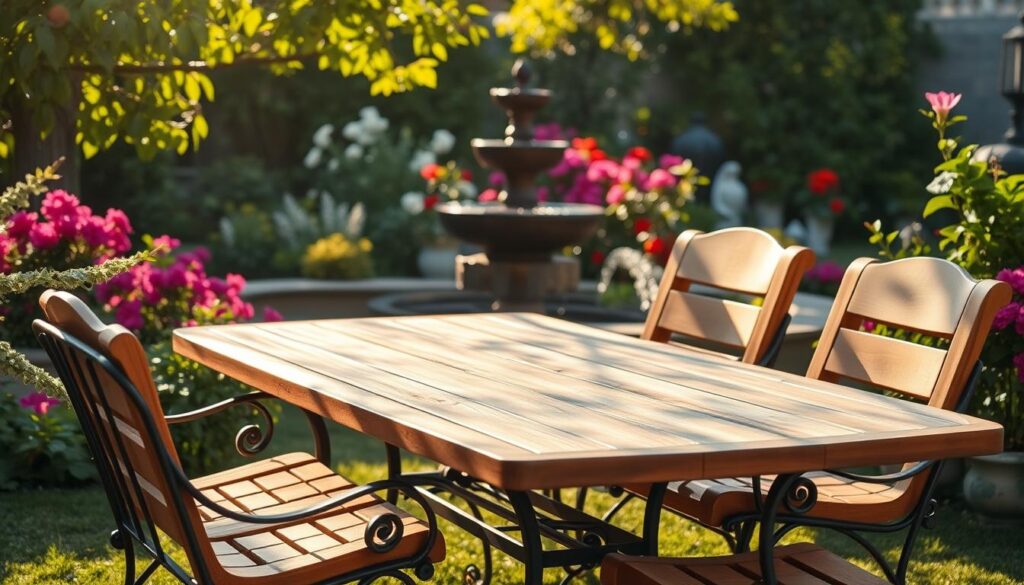Breathe new life into your teak furniture with top-quality teak wood restoration. Revive the natural beauty of your cherished teak items.
Teak Wood Restoration: Bring Back the Beauty
Teak wood restoration brings back the natural beauty of teak furniture. It’s known for being durable and resistant to rot, decay, and insects. Over time, teak furniture can get weathered and worn, losing its shine. Restoration involves cleaning, sanding, and finishing the wood to make it look new again.
This process is key to keeping teak furniture beautiful and durable. It works for both indoor and outdoor use. Teak furniture is a favorite among homeowners because it withstands harsh weather.
With proper restoration, teak furniture can last for decades. It adds beauty and function to any space. Using the right techniques and materials makes it a smart investment for homeowners.

Knowing the importance of teak wood restoration is vital. It keeps teak furniture looking great and lasting long. By using the right methods and materials, homeowners can bring back their furniture’s original beauty.
Key Takeaways
- Teak wood restoration is a process that revives the natural beauty of teak furniture
- Teak furniture is highly valued for its durability and resistance to rot, decay, and insect damage
- Wood restoration techniques are used to clean, sand, and finish the wood
- Teak wood restoration is essential for maintaining the beauty and durability of teak furniture
- Proper teak wood restoration can help to restore the natural beauty of the wood
- Teak furniture is a popular choice for many homeowners due to its natural resistance to harsh weather conditions
Understanding the Value of Teak Wood
Teak wood is highly valued for furniture making. Its high oil content acts as a natural preservative. This makes it resistant to rot, decay, and insects.
It’s perfect for outdoor furniture because it can handle harsh weather. The natural properties of teak wood also make it great for indoor furniture.
Teak wood has a rich, warm color that adds elegance to any room. It’s also very durable and can last for many years with the right care. This makes it a smart investment for homeowners.
Natural Properties of Teak
Teak wood has a high oil content, dense grain, and low shrinkage rate. These features make it resistant to warping, cracking, and damage. It’s also great for outdoor furniture because it can handle moisture well.
Why Teak Furniture Commands Premium Prices
Teak furniture is expensive because of its high quality and durability. The process of harvesting and processing teak wood is labor-intensive and costly. This is why teak furniture is often pricier than furniture made from other materials.
Common Uses in Outdoor and Indoor Settings
Teak wood is used in both outdoor and indoor settings. It’s durable and weather-resistant, making it perfect for patios, decks, and gardens. It’s also used in living rooms, bedrooms, and dining rooms for its beauty and durability.
- Outdoor furniture, such as tables, chairs, and benches
- Indoor furniture, such as sofas, beds, and dressers
- Decorative items, such as wall panels and ceiling tiles
Signs Your Teak Furniture Needs Restoration
Teak furniture is known for its durability. But, it can still show signs of wear and wood damage. Cracks, splits, and discoloration can happen over time due to the elements. Also, loose joints and worn-out finishes need attention.
To see if your teak furniture needs teak furniture restoration, look for these signs:
- Cracks and splits in the wood
- Discoloration or fading of the wood
- Loose joints or unstable frames
- Worn-out finishes or uneven surfaces
Fixing these problems early is key to avoid more wood damage. Regular care and teak furniture restoration keep your furniture looking great and lasting longer.
Essential Tools and Materials for Teak Wood Restoration
Restoring teak wood needs the right tools and materials for top-notch results. You’ll need teak wood restoration tools like brushes, scrubbers, and cleaning solutions. These are key for cleaning the wood.
For smoothing the wood, you’ll need sanding materials like sandpaper and steel wool. Don’t forget finishing products like oils, waxes, and sealants. They protect the wood and make it look great.
Video source from Youtube
- Cleaning solutions
- Sanding materials
- Finishing products
- Safety equipment, such as gloves and masks
Cleaning Supplies and Equipment
Cleaning tools and solutions are crucial. They remove dirt, grime, and old finishes. This step prepares the wood for sanding and finishing.
Sanding Materials
Sanding tools like sandpaper and steel wool smooth out the wood. They remove imperfections and scratches.
Finishing Products
Finishing products protect the wood and improve its look. Oils, waxes, and sealants are used for this purpose.
Safety Equipment
Wearing safety gear is important. Gloves and masks protect you from harmful chemicals and dust. They are essential when working with teak wood.
Professional vs DIY Restoration: Making the Right Choice
Homeowners often face a tough choice between professional and DIY teak wood restoration. Professional restoration might cost more but guarantees quality work. DIY restoration is cheaper but may not match professional standards.
The cost of restoring teak wood varies with the method. Professional restoration includes a detailed plan to restore the wood’s beauty and strength. DIY restoration requires more time and effort, and the outcome might not be as good.
Here are some key points to think about when choosing between professional restoration and DIY restoration:
- Cost: DIY restoration is cheaper upfront, but professional restoration might save money in the long run.
- Quality: Professional restoration usually offers better results, but DIY restoration can still yield good results with the right tools and materials.
- Time: DIY restoration takes longer, while professional restoration is quicker and more efficient.
The choice between professional restoration and DIY restoration depends on personal preferences and priorities. By weighing the pros and cons, homeowners can choose the best option for their needs and budget.
| Restoration Method | Cost | Quality | Time |
|---|---|---|---|
| Professional Restoration | Higher | Higher | Faster |
| DIY Restoration | Lower | Lower | Slower |
Step-by-Step Teak Wood Restoration Process
The teak wood restoration process has several steps to restore its beauty. It starts with cleaning, which removes dirt, grime, and old finishes. This step is key to prepare the wood for the next steps.
Next, the sanding process begins. It uses different grits of sandpaper and steel wool to smooth out the wood. Sanding is crucial to create a smooth surface for finishing.
Initial Cleaning Phase
The initial cleaning phase uses a mild detergent and water to remove dirt and grime. It’s important to avoid harsh chemicals, as they can harm the wood.
Sanding Techniques
Sanding techniques involve using different grits of sandpaper, starting from coarse to fine. This helps remove imperfections and create a smooth surface.
Applying Sealants and Finishes
After sanding, applying sealants and finishes comes next. This includes oils, waxes, and polyurethane. The finish used depends on the desired look and protection level.
The following table summarizes the steps involved in the teak wood restoration process:
| Step | Description |
|---|---|
| Cleaning | Remove dirt, grime, and old finishes |
| Sanding | Use different grits of sandpaper and steel wool to smooth out the wood |
| Applying Sealants and Finishes | Apply oils, waxes, and polyurethane to protect the wood |
By following these steps, you can restore your teak wood furniture to its original beauty. Always use proper cleaning, sanding, and finishing techniques for a successful restoration.
Common Challenges in Teak Restoration
Teak restoration can be tricky. Several challenges may pop up during the project. One big teak restoration challenge is wood damage. This can happen from weathering, rot, or bugs.
Some common problems in teak restoration include:
- Discoloration: Teak wood can change color from sunlight, water, or other environmental factors.
- Warping: Teak wood can warp or bend from temperature or humidity changes.
- Rot: Teak wood can rot from too much moisture or water.
To avoid restoration mistakes, it’s key to use the right methods and materials. Wrong cleaning solutions or too much finish can harm the wood. Knowing the common teak restoration challenges and how to avoid them helps ensure a successful project. This way, you can enjoy your teak furniture for many years.

Being aware of these issues lets you take steps to prevent them. Always choose high-quality materials and follow proper techniques. This helps avoid wood damage and restoration mistakes.
| Challenge | Cause | Solution |
|---|---|---|
| Discoloration | Exposure to sunlight or water | Use a UV-resistant finish or sealant |
| Warping | Changes in temperature or humidity | Use a stabilizing agent or adjust the environment |
| Rot | Excessive moisture or water | Use a waterproof sealant or replace the damaged wood |
Best Practices for Outdoor Teak Furniture Care
Caring for outdoor teak furniture is key to keeping it looking great and lasting long. To keep your furniture in top shape, follow a regular care routine. This means cleaning it often, checking for damage, and applying a sealant to protect it from the weather.
Seasonal protection is also crucial. This means taking steps to shield your furniture from extreme weather, like covering it in winter. These steps help prevent damage and make your furniture last longer.
Seasonal Protection Methods
- Covering the furniture with a waterproof cover
- Storing the furniture in a dry, protected area
- Applying a protective sealant to the furniture
Regular Maintenance Schedule
Having a regular maintenance plan is essential for your outdoor teak furniture. This includes:
- Cleaning the furniture regularly with a mild soap and water
- Inspecting the furniture for damage or wear
- Applying a protective sealant to the furniture
| Season | Maintenance Task |
|---|---|
| Spring | Clean and inspect the furniture |
| Summer | Apply a protective sealant to the furniture |
| Autumn | Clean and inspect the furniture |
| Winter | Cover or store the furniture |
Indoor Teak Furniture Maintenance Tips
Keeping your indoor teak furniture in top shape is key. Regular cleaning and polishing keep the wood looking great. Start by dusting and vacuuming often to stop dirt buildup.
To clean deeply, mix a mild soap with water and use a soft brush. This removes tough stains without harming the wood. For polishing, choose a good teak polish and follow the directions carefully.
Here are some extra tips for indoor teak furniture maintenance:
- Use coasters and placemats to protect your teak furniture from water marks and spills
- Avoid placing your teak furniture near direct sunlight or heat sources, as this can cause fading or cracking
- Consider using a teak conditioner to keep the wood moisturized and protected
By following these tips and keeping up with cleaning and polishing, your indoor teak furniture will last long. Always check the care instructions for your specific piece.
| Maintenance Task | Frequency | Recommended Products |
|---|---|---|
| Dusting and vacuuming | Weekly | Soft-bristled brush, vacuum cleaner |
| Deep cleaning | Monthly | Mild soap solution, soft-bristled brush |
| Polishing | Every 3-6 months | High-quality teak polish |
Environmental Factors Affecting Teak Wood
Teak wood is strong and versatile but can still be damaged by the environment. Things like climate, sun, and humidity can harm it. This can cause warping, cracking, and color changes. It’s important to know how to keep teak wood furniture looking good and lasting long.
Climate changes can make teak wood expand and contract, leading to cracks. Sun exposure can make it fade and change color. High humidity can cause mold and mildew. To protect teak wood, it’s key to shield it from these elements.
Climate Considerations
Extreme temperatures and humidity can harm teak wood. For instance, leaving it outside in hot, humid places can cause it to warp and crack. But, keeping it in cool, dry places can help it last longer.
Sun Exposure Effects
Sunlight can make teak wood fade and change color. To stop this, use a UV-resistant sealant or keep it in the shade. Cleaning and upkeep regularly can also help fight sun damage.
Humidity Considerations
High humidity can cause mold and mildew on teak wood. To avoid this, keep it in a well-ventilated area and away from too much moisture. Regular cleaning and care can also prevent humidity damage.

Knowing how the environment affects teak wood helps protect your furniture. Regular care and maintenance can prevent damage from climate, sun, and humidity. This way, your teak wood furniture stays beautiful and durable in any space.
Extending the Life of Restored Teak
To keep restored teak furniture looking great, it’s key to take care of it. Use a finish or sealant to shield it from the weather. Also, clean it often to stop dirt from building up. These steps help prevent damage and keep your teak furniture beautiful for a long time.
Some important steps to prevent damage include:
- Applying a waterproof sealant to protect the wood from moisture
- Using a UV-resistant finish to prevent fading and discoloration
- Placing furniture in a shaded area to reduce exposure to direct sunlight
Regular care is also vital for keeping teak furniture in top shape. This means:
Regular Care Routine
Clean the furniture with mild soap and water often. Also, check for any damage or wear. Catching problems early helps prevent bigger issues and extends your teak’s life. Regular care also means fixing any issues right away, like tightening loose parts. By doing these things, you can keep your teak furniture looking great and functional for years.
By following these tips and a regular care routine, you can make your restored teak furniture last longer. Always protect your furniture from damage and fix any problems quickly. With the right care, your teak furniture will stay beautiful and useful for many years, enhancing your space.
When to Seek Professional Help
Teak wood restoration can be tricky, especially with complex restoration projects. In these cases, getting professional help from teak restoration experts is wise. They know how to tackle tough tasks, ensuring top-notch results that last.
Here are some signs you might need a pro:
- Severe damage to the teak wood, such as deep cracks or rot
- Complex restoration projects, such as refinishing or reupholstering
- Lack of experience or expertise in teak wood restoration
When looking for teak restoration experts, find those with a solid track record. They should have the right skills and tools for complex restoration projects and deliver excellent results.
Getting professional help ensures your teak wood is restored to its former glory. This extends its life and keeps its value high.
| Restoration Task | Complexity Level | Recommended Approach |
|---|---|---|
| Refinishing | High | Seek professional help |
| Reupholstering | High | Seek professional help |
| Basic cleaning | Low | DIY |
Conclusion: Preserving Your Teak Investment
Starting your teak wood restoration journey? Remember, care and maintenance are crucial. Clean, sand, and seal your teak furniture regularly. This keeps it looking great indoors or outdoors.
With the right methods and products, your teak will stay beautiful and durable. It will add elegance to your home for years.
Follow this guide to tackle any teak restoration project. Your furniture will stay a beautiful, functional part of your home. Let teak wood’s natural beauty enhance your living spaces for generations.
FAQ
What are the natural properties of teak wood?
Teak wood is very resistant to rot, decay, and insects. This is because it has a lot of oil, which acts as a natural preservative. This makes it great for both outdoor and indoor furniture.
Why does teak furniture command premium prices?
Teak furniture is expensive because it lasts a long time and looks good. Its unique properties make it a top choice for quality furniture.
What are the common uses of teak wood in outdoor and indoor settings?
Teak wood is perfect for outdoor furniture like patio sets and garden benches. It also looks great indoors, in places like dining tables and bedroom sets.
How can I tell if my teak furniture needs restoration?
Look for cracks, splits, discoloration, loose joints, and worn-out finishes. Fixing these problems quickly helps keep your furniture in good shape.
What are the essential tools and materials for teak wood restoration?
You’ll need cleaning tools, sanding materials, finishing products, and safety gear. This includes brushes, scrubbers, sandpaper, oils, waxes, and gloves.
Should I choose professional or DIY teak wood restoration?
It depends on your budget, skills, and what you prefer. Professional work is top-notch but costs more. DIY can save money but might not be as good.
What are the common challenges in teak restoration?
Wood damage, warping, and discoloration are common issues. Using the wrong cleaning solutions or too much finish can also cause problems. Using the right techniques and materials helps avoid these issues.
How do I care for outdoor teak furniture?
Use seasonal protection, like covering furniture in bad weather. Clean and inspect it regularly. Protect it from direct sunlight and heavy rain.
How do I maintain indoor teak furniture?
Dust and vacuum it regularly. Use the right cleaning solutions and polish to keep the wood looking good.
How do environmental factors affect teak wood?
Climate, sun, and humidity can damage teak wood. Warping, cracking, and discoloration can happen. Knowing how to protect it is key.
How can I extend the life of my restored teak furniture?
Apply a finish or sealant to protect it. Clean and inspect it often. Fixing problems quickly helps keep it in good condition.
When should I seek professional help for teak wood restoration?
Get professional help for complex projects or if you’re not sure how to do it yourself. A reliable expert can ensure great results and an efficient process.
Read also : Teak Wood Patio Set Elevate Your Outdoor Living Space
